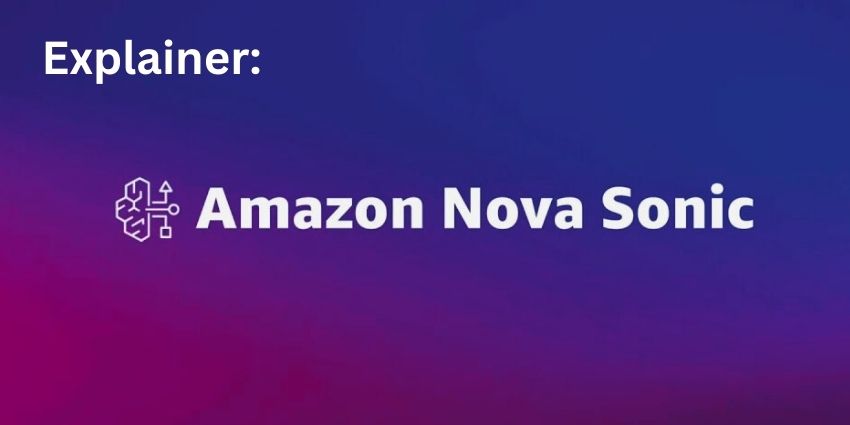Optimizely and Adobe have raced to the forefront of the Gartner Magic Quadrant for digital experience platforms (DXPs).
Again, they are joined by Acquia in an unchanged leader quadrant.
However, there are some significant shifts in the visionary quadrant, with Contentstack and Uniform joining Sitecore and Magnolia.
That marks an impressive first showing from the former two vendors, which are new to the Magic Quadrant.
Joining them as new entrants are Builder.io, Contentful, and Pimcore. Each of these vendors sits in the niche player square.
Meanwhile, OpenText and HCLSoftware maintained their spots as challengers.
Finally, Gartner did not include Bloomreach and Crownpeak this year. In the 2024 edition, the vendors secured visionary and niche player spots, respectively.
However, they do not feature this time around as Bloomreach no longer goes to market as a DXP, and Crownpeak failed to meet the revenue growth criteria.
The Definition of a Digital Experience Platform
A digital experience platform (DXP) comprises technologies to help design, manage, and deliver digital customer experiences.
Core applications within a DXP include journey orchestration, assembly, and management solutions, which fit within a composable architecture that allows for API-first approaches.
Other key features include cloud deployment versatility, content management, and account services. Gartner shares more on these – and several other common capabilities in its report.
The analyst then goes on to split the 16 DXP providers into four categories: leaders, challengers, visionaries, and niche players. Here’s how they performed.
Gartner Magic Quadrant Leaders
Leaders in the Magic Quadrant support various DXP use cases, consistently meet customers’ needs, and offer a compelling vision for the future of the technology. This year’s leaders include:
- Optimizely
- Adobe
- Acquia
Optimizely
Optimizely pairs a deep feature set with a library of specialist tools. Underneath is a highly composable architecture that allows users to mix and match these first- and third-party solutions to orchestrate their desired experiences. Recognizing this, Gartner lauds the vendor’s “platform breadth and modularity”. In the report, the analyst also commends its “pricing and packaging” alongside its “global momentum and growth”.
Adobe
Adobe received plaudits for its “brand awareness” and “partner support”, with the latter featuring many design and creative agencies, systems integrators (SIs), and marketing agencies. That ecosystem enables customers greater choice of DX partners. Gartner also notes “innovation” as a core strength, which was on full show during Adobe Max 2024, where the tech giant underlined its non-destructive approach to AI and much more.
Acquia
The Acquia Digital Experience Platform stands out for its “open-source community”, which offers 50,000 plug-ins and 1,000 distributions to drive innovation and original customer experiences. Gartner recognizes this, alongside the vendor’s “centralized development environment” and “AI integration”, with the Drupal developer code assistant exemplifying the latter by helping developers complete various tasks across the platform.
Gartner Magic Quadrant Challengers
Challengers in the Magic Quadrant have a greater install base than Niche Players and Visionaries, successfully meeting current customer demands. However, their vision for the future of the DXP space trails market leaders. This year’s challengers are:
- OpenText
- HCL Software
OpenText
OpenText gained challenger status chiefly through its robust “authenticated experiences”, which the vendor continues to develop as a differentiator that appeals to organizations in highly regulated industries. It also draws acclaim for its “product development” and “beyond DXP” strategy, which sees the vendor blur the lines with IT service management (ITSM). Unfortunately, OpenText lags due to its “complex UO” and “platform complexity”.
HCL Software
HCL Software targets large organizations with strict data protection, compliance, and security needs. Its strengths in “governance and compliance” and substantial “market presence” align well with this focus. Gartner also commends the vendor for its “analytics and intelligence” features, delivered through HCL Discover. However, some customers have reported “longer-than-expected implementation cycles”.
Gartner Magic Quadrant Visionaries
Visionaries in the Magic Quadrant are forward-thinking vendors adept at anticipating emerging customer needs and the potential impact of new technologies. Yet, they may lag in their platform depth or execution track record. This year’s visionaries are:
- Sitecore
- Magnolia
- Contentstack
- Uniform
Sitecore
Sitecore couples two key strengths: “innovation” and “composable DXP”. In doing so, it pairs rapid product development with a fast-growing marketplace, broadening its reach across the DXP space. Alongside this, Gartner lauds its high “B2B appeal”, stemming from its prowess in enabling authenticated, secure experiences. Nevertheless, Sitecore customers note sticking points in their cloud transitions, per the analyst.
Magnolia
Magnolia differentiates with its composable underbelly, which offers integration frameworks that allow brands to orchestrate industry-specific customer journeys, faster. Gartner gives this approach plaudits, alongside the vendor’s for “AI innovation” and “pricing structure”, which is described as “clear and easy”. Limited SaaS options, compared to its self-hosted DXP, is – however – an area of caution.
Contentstack
Contentstack differentiates with its “front-end hosting”. According to Gartner, by offering this natively – with back-end hosting – as part of a unified offering, the vendor can attract buyers that like to bundle. In addition, Gartner pinpoints “personalization” and “customer service” as cornerstone strengths. Nevertheless, its “pricing” is a concern, which restricts its business largely to enterprises.
Uniform
Like Contentstack, Uniform blazes into the visionary quadrant on its first attempt. Gartner credits its “composable flexibility”, “developer-friendly” proposition, and “AI innovation” for its impressive first appearance. That AI innovation includes AI agents that help create content and design experiences. Yet, the vendor’s limited “CMS (content management system) maturity” and “non-native capabilities” and prominent detractors.
Gartner Magic Quadrant Visionaries
Niche players in the Magic Quadrant find success by focusing on specific industries, company sizes, and geographic segments. Nonetheless, their broader capabilities, execution, and vision lag behind leaders. This year’s niche players are:
- Liferay
- Progress
- Kentico
- CoreMedia
- Contentful
- Builder.io
- Squiz
- Primcore
Liferay
Liferay wins plaudits for its “low code” development approach and “AI integration”. However, a significant percentage of its install base still leverages the vendor’s on-premise offering, signaling issues in its SaaS strategy.
Progress
Progress impresses with its “technology stack”, delivering out-of-the-box solutions with a high level of customizability. Gartner commends this, alongside its “customer data management” feature set. Yet, the analyst tags “cloud strategy” and its “developer-focused legacy” as cautions.
Kentico
Kentico has its eye firmly on midsize organizations with its “all-in-one” DXP that draws plaudits from Gartner for its “platform vision” and “strong growth”. However, the analyst stresses that its re-platforming focus may have stalled its innovation.
CoreMedia
With a healthy presence in the retail and communications sectors, CoreMedia has strengths in its “customer journey management” solutions and AI “blueprints”, which help extend the platform. Nevertheless, Gartner cited concerns about its complex back-office UI and limited vendor resources outside of Europe.
Contentful
As it has transitioned from a CMS to a fully-fledged composable DXP, Contentful has achieved significant “brand awareness”. That’s a key strength, alongside its “composable, headless architecture”. However, recent “organizational changes” signal growing pains.
Builder.io
Builder.io is one of the youngest vendors in the Quadrant. With a fresh perspective, it has paved the way for “easy design functionality”, a “flexible layout”, and a cost-effect “price structure”. Yet, Gartner warns that the company – as a startup – faces an “uncertain future”.
Squiz
Establishing an install base in government, energy and utilities, and education, Squiz can demonstrate high “sector expertise”. That’s a key strength, alongside its “licensing flexibility”. Unfortunately, the report cites its “innovation pace” as a caution.
Pimcore
Pimcore’s open-source heritage aligns well with its “developer flexibility” strength, which has helped it establish a considerable European presence in the retail and marketing sectors. Outside of Europe, however, it has a “limited geographic reach”, as per Gartner.
For more Gartner Magic Quadrant coverage, check out the following articles:
- Gartner Magic Quadrant for Digital Experience Services 2024
- Gartner Magic Quadrant for CRM Customer Engagement Center (CEC) 2024
- Gartner Magic Quadrant for Customer Data Platforms 2024







